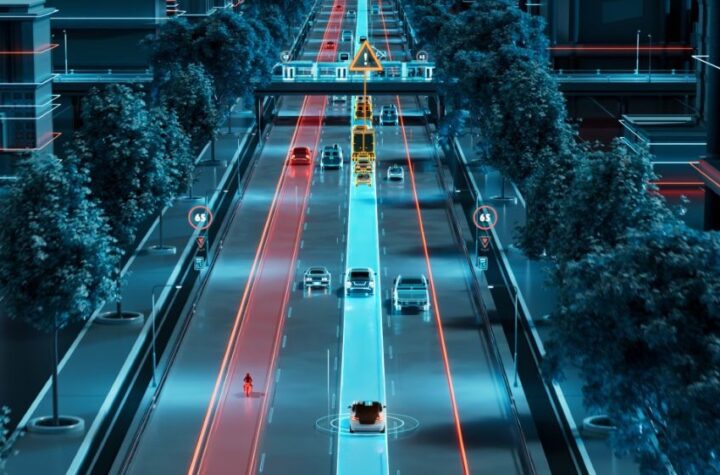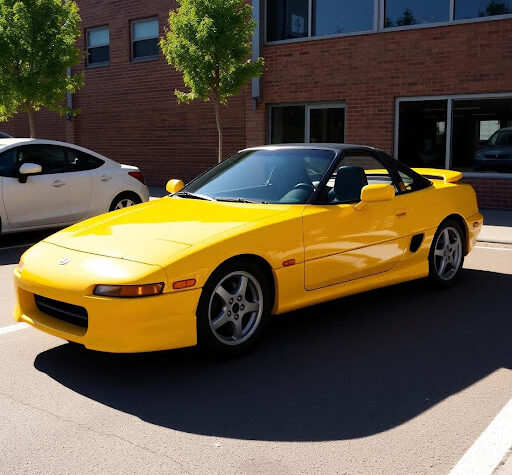
Safety has always been our North Star. We view it as a moral imperative to pursue a future with autonomous vehicles (AV), but to not wait for it when we have the technology to help save more lives today.
We fundamentally also believe that everything we do must scale, and we constantly search for the best ways to match our technology to market needs. Founded on the idea that we could use computer vision technology to help save lives on the road, Mobileye became a pioneer in advanced driver assistance systems (ADAS). These capabilities are now scaling up to become the building blocks for a fully autonomous vehicle.
The same is also true in reverse. New technologies developed specifically for AVs are enabling greater scale of advanced driving assistance systems and bringing a new level of safety to roads.
AV Technology Raises ADAS to the Next Level
There are five commonly accepted levels of vehicular autonomy. (Zero is no autonomy.) ADAS systems fall into levels 1 and 2, while levels 3 to 5 are degrees of autonomy ranging from autonomy in some circumstances to full autonomy with no human intervention.
While level 1 and 2 cars can be bought today, cars with varying degrees of autonomy are still in development. We know self-driving cars are technically possible. But the true challenge to get them out of the lab and onto the roads lies in answering more complex questions, like those around safety assurance and societal acceptance. To that end, we have been innovating around the more difficult enablers of AV technology such as mapping and safety.
This technology envelope that we’ve designed around the AV will take ADAS to the next level.
At Mobileye, we developed Road Experience Management™ (REM™) technology to crowdsource the maps needed for AVs – what we call the global Roadbook™. We are now harnessing those maps to improve the accuracy of ADAS features. An example of this is the work that Volkswagen and Mobileye are continuing in their efforts to materialize a L2+ proposition combining the front camera and Roadbook technologies, and leveraging the previously announced data harvesting asset. The ongoing development activity is targeting a broad operational envelope L2+ product addressing mass market deployment.
We also developed the technology-neutral Responsibility-Sensitive Safety (RSS) mathematical approach to safer AV decision-making, which is gaining traction as industry and governments alike have announced plans to adopt RSS for their AV programs and help us work toward development of an industry standard for AV safety. For example, China ITS Alliance – the standards body under the China Ministry of Transportation – has approved a proposal to use RSS as the framework for its forthcoming AV safety standard; Valeo adopted RSS for its AV program and agreed to collaborate on industry standards; and Baidu announced a successful open-source implementation of RSS in Project Apollo.
Today, we are taking RSS technology back into our ADAS lab and proposing its use as a proactive augment to automatic emergency braking (AEB). We call this automatic preventative braking (APB). Using formulas to determine the moment when the vehicle enters a dangerous situation, APB would help the vehicle return to a safer position by applying small, barely noticeable preventative braking instead of sudden braking to prevent a collision.
If APB were installed in every vehicle using an affordable forward-facing camera, we believe this technology can eliminate a substantial proportion of front-to-rear crashes resulting from wrong driving decision-making. And if we add surround camera sensing and the map into the equation so that preventative braking can be applied in more situations, we can hope to eliminate nearly all collisions of this nature.
We believe preventative technologies like APB hold the key to reaching “Vision Zero” and hope that ubiquitous adoption could lead to nearly zero fatalities and injuries from road accidents resulting from wrong driving decision-making. It would stand apart from other tools in the global Vision Zero toolkit in that it would be resident in the car – not in the surrounding infrastructure. Rather than inserting obstacles that interfere with traffic flow – like speed bumps or reduced speed limits – APB will proactively adjust the vehicle’s speed to maintain safety only when necessary, therefore improving safety without sacrificing traffic flow.
Beyond the Autonomous Vehicle
In addition to the spillover effects of AV technology to ADAS, we are discovering entirely new applications and revenue streams that reach beyond the vehicle.
A good example is our new partnership with Ordnance Survey, one of the world’s most sophisticated mapping agencies. By equipping utilities fleets with our retrofit system Mobileye 8 Connect™, we will both map the United Kingdom for the AV and offer our first data services product to those utilities companies. Imagine if, instead of having to jump through bureaucratic hoops for months on end and rely on outdated imprecise information in order to drill a simple hole in the ground, the process was quick because using our REM data you could easily map the underground assets to the corresponding over-the-ground landmarks. This example suggests tremendous promise for an entirely new set of uses for the technology we’re developing for AVs and helps deliver on the smart city promise.
AV is Our Collective Moonshot
It will take some time before AVs deliver on the promise to help save lives. In the meantime, our ADAS technology is winning significant recognition from the world’s leading safety rating agencies as they recognize the lifesaving power of camera-based active safety systems. In 2018, 16 models received a five-star safety rating from the EuroNCAP – 12 of them with Mobileye collision avoidance technology inside.
Much of this technology is paving the way to our autonomous future and will form the basis of early autonomous Mobility-as-a-Service offerings including in China with Beijing Bus and in Israel with the Volkswagen Group/Champion Motors/Mobileye partnership
In the meantime, our ADAS business continues to grow and includes an agreement with Great Wall Motor Company to bring Mobileye-powered ADAS cars to market outside of China. This caps a year in which we realized 28 new design wins from 24 OEMs and eight Tier Ones, 20 program launches with 78 vehicle models from 16 OEMS and five Tier ones – 56 of those models with advanced functionalities.
We have a moral obligation to bring forward as much of the safety benefit from ADAS as possible. This means working with all those who believe in Vision Zero to embrace the life-saving power of ADAS across the spectrum – from retrofit to embedded and from Level 1 through 3, while also moving quickly to define standards for safety for AVs. Human lives are on the line, which is why Mobileye and Intel will continue to follow the safety star.
Prof. Amnon Shashua is senior vice president at Intel and president and CEO of Mobileye, an Intel Company.
About Intel
Intel (NASDAQ: INTC), a leader in the semiconductor industry, is shaping the data-centric future with computing and communications technology that is the foundation of the world’s innovations. The company’s engineering expertise is helping address the world’s greatest challenges as well as helping secure, power and connect billions of devices and the infrastructure of the smart, connected world – from the cloud to the network to the edge and everything in between. Find more information about Intel at newsroom.intel.com.




More Stories
TomTom’s Orbis Maps with 3D Lane geometry set new standards for mapping precision
Accelerating The Development of Hydrogen Vehicles & Infrastructure – Europe’s Biggest Players Meeting at Premier Event
Automotive IQ Announces the 15th Annual Automotive Functional Safety Week 2025